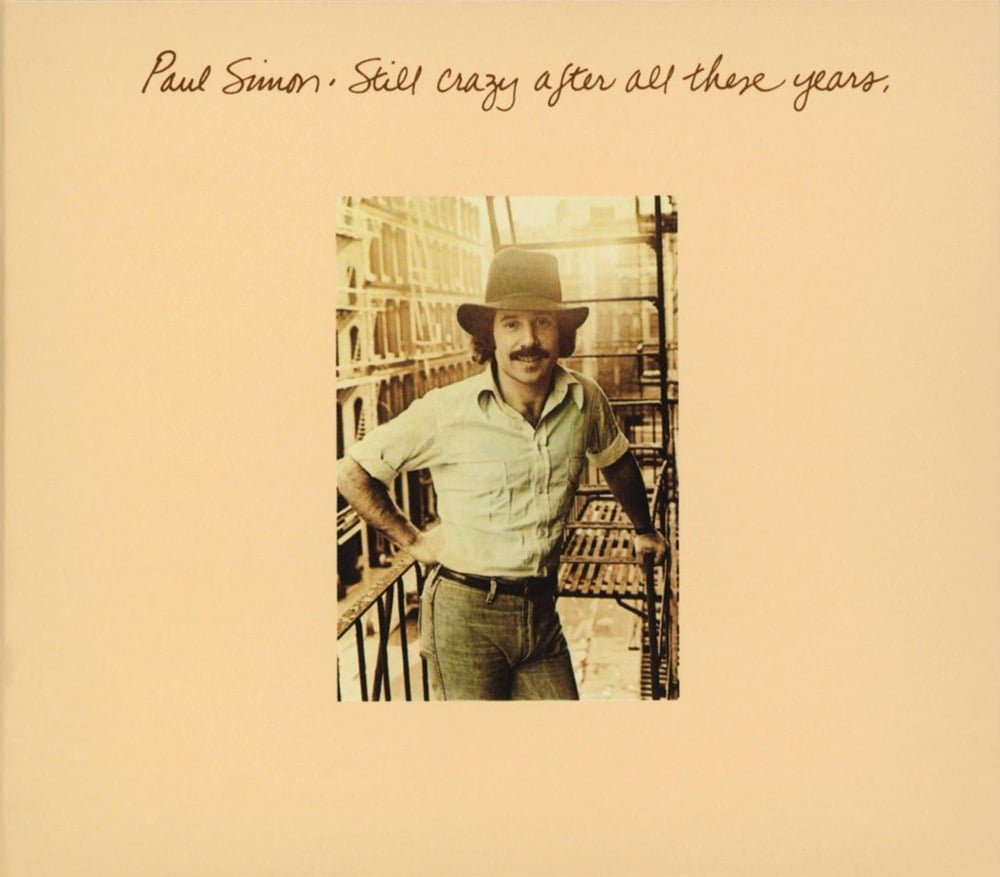Paul Simon: a beginner’s guide.
A curated collection of America’s greatest singer-songwriter.
photo by Harry Chase, retrieved from Wikimedia Commons.
On the steep slopes of the Colorado mountains, the wind that blows by me is accompanied by the whistle of the Andean quena. Alongside the crunch of every dead clump of grass that passes underfoot in Texas, I hear the sputtering embers of dying love. In the Boreal winter of Chicago, each passing piece of frost propels the next in an endlessly cycling ostinato.
All these vignettes are tied together by one man’s songs; America’s own, Paul Simon.
One of the most lauded songwriters of all time, Simon’s debut to the world was with his musical partner, Art Garfunkel. They collaborated under the imaginative name Simon and Garfunkel. Together, through the 60’s, they conquered the charts with their beautiful harmonies and the power of Simon’s lyrics. Unfortunately, amid rising tensions between the two singers, they disbanded in 1970. Following their breakup, Simon became a solo artist, incorporating various genres, including gospel, jazz, zydeco, and most notably the South African styles of Isicathamiya, and Mbaqanga to his timeless American Folk-Rock sound. Below I’ve collected four albums that demonstrate the best of Paul Simon’s musical talent, with each record showcasing one of Simon’s strengths. I hope this article serves as an intro to his discography and encourages readers to explore his catalog further!
Bridge Over Troubled Water, 1969
If you’re determined to only listen to one of the records on this list, this is the one. The final studio album by Simon and Garfunkel, Bridge Over Troubled Water is nothing short of glorious. It has the duo at their most refined; Simon’s lyrics and song structure at their tightest, and Garfunkel's voice at its most angelic.
The trifecta of “El Condor Pasa (I Wish I Was), “The Boxer”, and the title track display’s S&G at their most cohesive. “El Condor” is a fascinating piece taking the melody from a 1913 Peruvian musical and placing it under Simon’s introspective lyrics. The production incorporates traditional Andean woodwind instruments. This sonic palette transports the listener to the frigid mountains of the Andes.
“The Boxer”, boasts the strongest lyrics of any of the duo’s other songs, recounting the odyssey of a young boy beaten down by the harsh outside world. Shifting upper harmonies by Garfunkel call attention to Simon’s vivid storytelling. I adore how this song presents the speaker as a deeply tragic figure, seeking not forgiveness, but only understanding for his action. In the final verse, we are overcome by every scrape, scratch, cut and bruise the boxer endured until the song explodes in the chorus, ushering us out.
Garfunkel gives an unparalleled performance as the lead singer on the title track “Bridge Over Troubled Water”; his tender vocals melt away all strife. Session musician Larry Knechtel’s piano playing is comforting, guiding Garfunkel’s singing. Simon also struck gold when he wrote the main melody; I’m in awe of the harmonic movements. The chorus captures the feeling of being protected by a guardian angel. By the finale, Garfunkel, floating above a sea of strings, breathlessly professes the iconic line “Like a bridge over troubled water/ I will ease your mind”, Climatically bringing the song–and Simon and Garfunkel’s legacy–to a close.
Bookends, 1968
Who is this for:
Bookends, in contrast to Bridge Over Troubled Water, features the group at their most experimental. If you want a peak at Simon and Garfunkl’s off-the-beaten-path tracks, I’d check this album out as it displays their more unique songwriting.
The A-side of this album loosely follows the stages of life. “America” represents early adulthood, when you first venture out to discover yourself. The track has a wonderful back and forth between the bouncy guitar and the crystalline organ. The lyrics, particularly: “Kathy, I’m lost, I said though I know she was sleeping/ I’m empty and aching and don’t know why” highlight the struggle of finding your way in an uncaring world, and even harder than that, admitting you need help.
“Overs”, contrastingly, is hauntingly barren, symbolizing middle age. The song consists of just an acoustic guitar and a singer, narrating the thoughts of a spouse in the doldrums of their love. So disillusioned with their partner that they want to get out, but so scared of being alone that they won’t. The intimate instrumentation puts the feeling of looming misery front-and-center. Just like the couple, there is no way to avoid the writing on the wall. Garfunkel’s entrance in the bridge is like a ray of light breaking through the overcast sky after a storm, conveying whatever vestiges of attraction are still left between the couple.
After a brief interlude “Old Friends” begins, depicting old age. The opening lyrics paint the scene of two men sitting on a park bench. Just like the last track, Garfunkel’s entrance radiant yet delicate like the flash of nostalgic memories. “Bookends Theme-reprise” begins with the same guitar line present in the intro however instead of welcoming us into the world it's the last thing we hear before we pass on. Over the motif the duo adds lyrics, recounting memories of times gone by. They conclude the a-side with these words:
“Long ago, it must be
I have a photograph
Preserve your memories
They're all that's left you”
an absolutely heartrending gut-punch, reminding us to spend time with those we love before we can never see them again.
Graceland, 1986
Who is this for:
Graceland is a seminal album in the history of rock, folk and pop music. Rich (if a little loquacious) in its storytelling. The highs of this album are unmatched, and it exudes an infectious happiness.
Fast forward 17 years from Bridge Over Troubled Water. Paul Simon is now a solo artist. After receiving a cassette tape of the Boyoyo Boys from the creator of Saturday Night Live, Lorne Micheals, Simon was inspired to find the band who recorded it and work with them. This was the spark that led to the creation of 1986’s Graceland. Graceland is a unique blend of folk, zydeco and various South African styles all united by Simon’s purposeful poetry.
Simon himself is simultaneously the greatest strength of the album and its biggest shortcoming. An example of the latter is “I Know What I Know” which contrasts an intricate rhythm section and background vocals with an annoyingly shallow, unenthused vocal melody from Simon.
But when Simon and the band are on the same wavelength, they blow it out of the park. Shown on my favorite track here “Diamonds on the Soles of Her Shoes”. It starts with a gorgeous acapella section from LadySmith Black Mambazo and Simon, leading into a laid-back groove, capturing the energy of a cold drink on a hot day, chorus guitars clinking like ice against the glass.
What I love about Graceland is the joyful energy featured on tracks like “The Boy in the Bubble”, “Diamonds on the Soles of Her Shoes”, “Gumboots”, and “Call me Al”. Each one is full of life, and whenever I hear them it’s impossible not to smile.
Still Crazy After All These Years, 1975
Who is this for:
If you want a warm, uncovering-Dad's-old-records album this is the one for you. While not as flashy as the others, Still Crazy is just as–if not more–impressive.
Before Paul Simon redefined himself with Graceland, Still Crazy represented the pinnacle of his solo work. I first heard this album when I’d just moved out for college. In those tough times, the album’s comforting cocktail of electric piano and sentimental lyrics were exactly what I needed to hear. The title track showcases an amazing chord progression and Simon’s best vocals. Everytime I hear that final chorus I’m amazed at how–despite its heavy orchestration–it never loses the intimacy of the earlier verses.
My favorite track on the record is “Night Game”. Simon, here, sings in his lowest register accompanied by an electric guitar and a deep bass. The song repeatedly changes time signatures, giving it a push-and-pull feeling. While this could make the track disorienting, Simon expertly arranged the music so the feeling is natural. I love how, during the verses, all the instruments are packed together, bundling up for warmth, but when the chorus comes, the production spreads out, leaving an icy, isolated feeling.
One of the most remarkable tracks on this album is “My Little Town”. Following a brief period of reconciliation, Garfunkel once more joined up with Simon to record it. It still stands today as their last ever studio track together, and boy is it a good send off. It combines Simon’s newer, more sophisticated song writing, with the classic S&G harmonies, showing that even after years apart their voices still fit together like lock and key.
To me, Paul Simon is the quintessential American musician. Starting from humble origins, he honed his craft until he became one of the greatest lyricists of all time. His music represents the American melting pot; while he always has had strong roots in folk, he has never been scared to branch out and add elements of other styles. There is an opaque candidness in his music. While his songs are rarely direct in their themes, the feelings they convey are alway clear. I may not know who the woman in “Slip Slidin’ Away” is, but when she says
“a good day
ain’t got no rain
a bad day’s when I lie in bed and think of things that might’ve been”
I know exactly what she means, and I’d be hard pressed to find any other artist who can bring me to tears in just 3 lines.
edited by Joyce Zhang.
cover photo by Harry Chase, retrieved from Wikimedia Commons.
album artwork believed to belong to either the publisher of the work or the artist.





